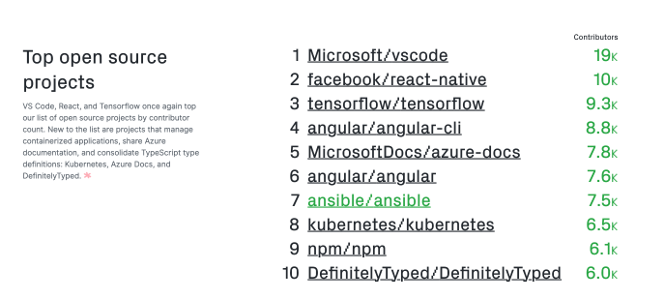Ansible is the most active community in the configuration management space; according to GitHub's State of the Octoverse report, it was the seventh most contributed project of 2018. After interviewing Kris Buytaert and Toshaan Bharvani, co-founders of Configuration Management Camp, I decided to spend a day in the Ansible room at CfgMgmtCamp '19, where I learned some great ways to participate in this fast-paced ecosystem.
Here are the three ways that have me excited for would-be contributors to the Ansible community.

1. Participate in working groups
I use Ansible for everything from spinning up my MacOS config (thanks to Geerling Guy) to spinning up a Kubernetes cluster. Each use case is unique and has differing needs. What I hadn't realized until CfgMgmtCamp is that the community breaks these specializations into working groups:
"Working groups are a collective of people that share an interest in a specific technology domain and are empowered to support, review, and merge code in Ansible."
Anyone can join in and start to focus on how Ansible fixes a specialized need. You can see the full list of working groups on the Ansible community wiki and hop into the topics that you care most about.
2. Show off your code at Ansible meetups
There are 250 groups on Meetup.com that mention Ansible in their description. One of the best ways to contribute code to any open source community is to explain it to your local peers. Search Meetup for an Ansible group in your community; if you have one, I'm sure your local event lead would love to hear from you. If there isn't a local one yet, the Ansible team is always looking to start new meetups and will help you do so.
3. Contribute to Ansible
I love how you can contribute code to Ansible community members through playbooks, modules, and on Galaxy. What I didn't know until CfgMgmtCamp is just how many other places are there are for contributing. Some newer, or lesser known, options are:
- The official open source GUI for Ansible is the Python Django-based AWX.
- The Molecule testing framework for playbooks officially joined the Ansible organization in October 2018 and is growing fast.
- There is now an official linter with Ansible Lint, which runs automatically when you upload content to Galaxy.
- Zuul, a continuous-integration tool designed for cross-repository testing, is written in Ansible playbook format.
How will you get involved?
Configuration Management Camp inspired all kinds of excitement for the ever-growing set of tools that keep us automating all the things. The more I look around the Ansible GitHub organization, the more ways I see to contribute to the configuration management ecosystem I've grown to love. If you're looking for more inspiration, the Ansible team has a "contributing to Ansible" video that's excellent.
How are you thinking of getting involved in 2019? Share your ideas in the comments or on Twitter by @-ing @OpenSourceWay.







Comments are closed.